So last week, I may or may not have gloated about our wonderful 1 year wedding anniversary. We decided to celebrate the beautiful occasion with a special trip to a place we had been talking about for ages—Charlottesville.
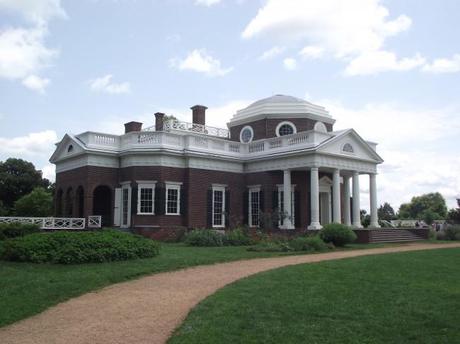
For you other history loving dorks, you know that Charlottesville is chock full of amazing colonial history treasures like Thomas Jefferson’s Monticello and University of Virginia. We had decided early on to make Charlottesville our first anniversary trip since it was on Mr. A’s before kids bucket list (yes, he has one and yes, it is long).
We started our trip off early in the morning on Memorial Day. We had scheduled a 12 o’clock house tour of Monticello and with our apartment nearly 3 hours away from Charlottesville we needed an early head start.
The drive down there was really serene and beautiful as we cut through farmland and old houses. It actually reminded me of the drive we used to take to Antrim (where we were married), making me incredibly sentimental.
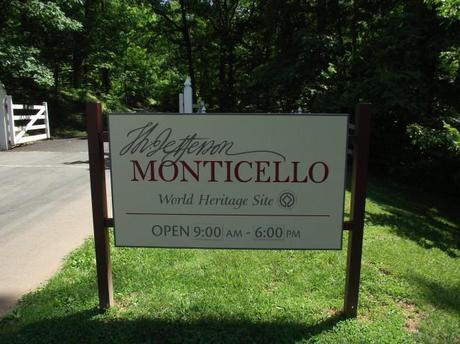
Due to our poor red light luck, we ended up getting to Monticello minutes before our tour time. We were both a little panicked because the online reservation clearly directs you to pick up your tickets 30 minutes before you tour.
After parking, we hightailed it up to the visitor’s center to pick up the tickets and a few brochures, where the attendant kindly told us to hurry on up to the house. Unlike Mount Vernon, Monticello’s visitor’s center is a steep 3/5 of a mile hike from the actual house. Lucky, they provide shuttles from the visitor’s center to the house. We hopped on the first shuttle and arrived at the front of the house in no time.
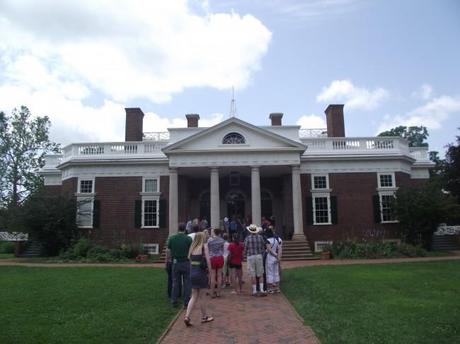
We quickly handed over our tour tickets and rushed to join our tour group that just started. Monticello operates tour groups of 20 every ten minutes that are led by one tour guide who walks through the first floor of the house.
The house tour begins in the front yard of Thomas Jefferson’s masterpiece. Our tour guide took this time to provide us brief history of the house.
Construction on Monticello began in 1768 and was never really fully completed. The entire time Jefferson lived there he was in a state of constant remodeling. The house is inspired by the European architecture that Jefferson admired so greatly during his time as Minister of the United States to France.
Unfortunately, when Jefferson passed away, he was severely bankrupt (over $100,000 in debt) and his surviving daughter had to sell the house to pay down the debt. The house was eventually purchased by Uriah P. Levy, the first Jewish Commodore, who greatly admired Jefferson’s stance on religious freedom. It wasn’t until 1923 that the estate was purchased from the Levy family by the Thomas Jefferson Foundation. Since that time, the foundation has put in a lot of resources into restoring Monticello, which fell into considerable disrepair, back to its original state. The Foundation has managed to furnish the house with about 60% of the original pieces, an extraordinary feat considering everything was sold after his death to settle his debts.
After this brief history lesson, we were taken inside the house to tour the downstairs. Unfortunately, visitors are not allowed to take pictures but I can tell you that the inside is breathtaking.
Jefferson imbued the house with traditional European cathedral ceilings (some towering to close to 19 feet tall) and relied heavily on natural light, including massive floor to ceiling windows and thirteen skylights.
We started first in the entrance hall which was covered in artifacts discovered during the Lewis and Clark expeditions. Then we moved through the library, which was covered from floor to ceiling in books, one of his most beloved treasures.
We continued into his bedroom, where you can famously find his bed in a cutout of the room. Jefferson loved alcove beds for their space saving capacities and employed them in nearly every bedroom. Next, we moved through the parlor in the dining room and onto the guest room, which was lovingly referred to as the Madison room since James Madison and his wife spent so much time there.
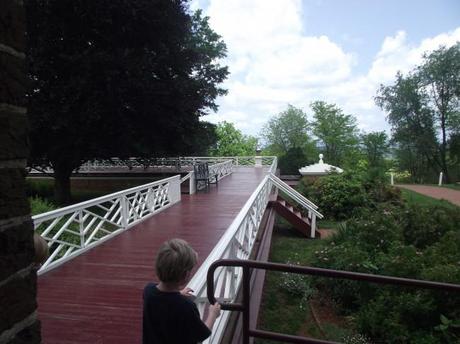
The tour then picked up outside the house on the north terrace, where we were allowed to resume picture taking.
The house is flanked by the north and south terrace which serve not only as two large decks but as discrete coverings for the outhouses (kitchen, stable, icehouse, etc.) that lie below.
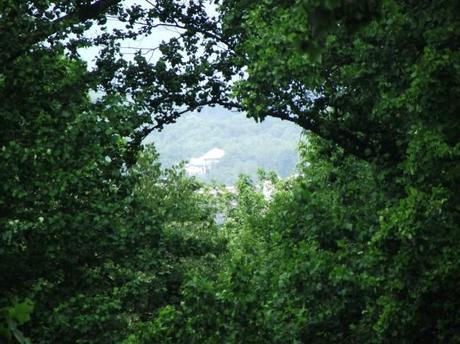
From the north terrace through a tiny break in the trees, you can see the dome of the Rotunda of the University of Virginia. It’s been said that when Jefferson wasn’t personally overseeing its construction on site he would often peer through this opening to take a look at his beloved University of Virginia.

At this point, our house tour was over and we were free to roam the grounds until our next scheduled tour (we decided to purchase the behind the scenes tour as well so we could take a peak at the second and third levels of the house).
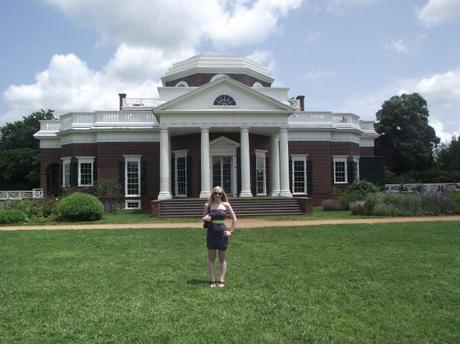
We, of course, immediately ran over to the lawn to take pictures in front of the famous dome. I was surprised by how easy it was to take pictures without tourists around (this is nearly impossible at Mount Vernon).
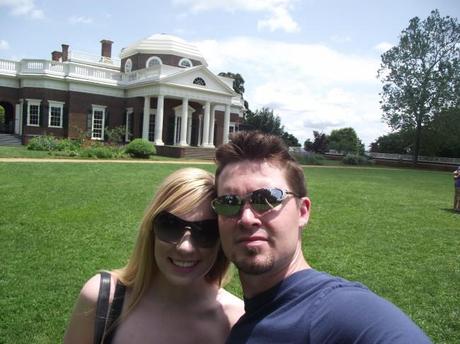
Since I’ve already filled your head with entirely too much random Jefferson knowledge, I’ll stop here and continue the recap of our visit in tomorrow’s post. Make sure to stop by to see pictures of the outbuildings, gardens, and the inside of the famous dome room.
